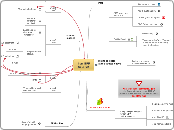from BPRto BPMo
intro
2009 trends in IT
McKinseyFive trends that will shapebusiness technology in 2009
GartnerMeeting the Challenge:The 2009 CIO Agenda
McKinseyIT's unmet potential
Cutter BenchmarkEA resolutions for 2009
2009 hypes and buzzwords
(The Acronym) SOA is (Perhaps) Dead (at Some Companies);Long Live Services
course classes
week1class1
EA as StrategySystemic Model
Operating Model
EA vs IT A
week1class3
SOA maturity stages
week2class2
skepticalenterprisearchitect
EA projects fail- because- what to do
EA governancelifecycle
1. EA Engagement
2. Execution
3. Prioritization
4. Audit
week2class3
EA and business capabilities
BPM
week4class1
EA project by projectNiels Fonstad
methodologies at the strategic level
BPM suites
Gartner's 2009magic quadrant

class discussion

want to add your comments? go tohttp://www.mindomo.com/edit.htm?m=87f5f2bd510c4deca02abb8198a425c9to edit the map
is any perspective goodfor any BP?critical aspects
the purpose of the modelling
do you agree?
Aurelio
the value of the process
do you agree?
size of the BP
do you agree?
Aurelio
legal norms on the BP
do you agree?
Aurelio
perspectives on BPs
Melao and Pidd 2000'sframework
examples of BPsuseful for discussion
ATMmachine
restaurant
granting a loan
important issues
do not confuse the implementaion of a perspective with the perspective
as-is vs to-be processes
